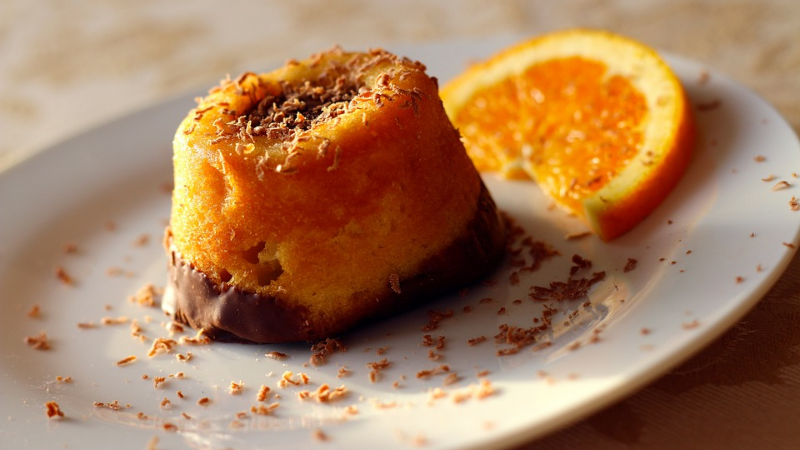When you think about the military, what comes to your mind at first? No, its not something just followed by the armed soldiers as you might have guessed. Its actually a 3-day diet, intended to lose weight up to 10 pounds in one week and involves a 3-day meal plan followed by 4 days off. But that’s not one time! You have to repeat the weekly cycle again and again until your desired goal is reached.
Those who have advocated the diet claim that it was framed by the nutritionists in the US military as an effective technique to put soldiers into good shape drastically.
Synonyms of the diet
Now if someone calls it in a different name, don’t be confused.
The military diet, however, is also known as the navy diet, the army diet and even the ice cream diet. Sounds cheesy by the last word, right? Yes, I know you have a question about how ice cream and diet can be linked, and you’ll definitely discover the answer!
How Does the Military Diet Work?
The 3-day military diet is divided into 2 phases over a 7-day period.
For the first 3 days, a set of low-calorie meal plan for breakfast, lunch and dinner tops the chart while there shouldn’t be any snacks between meals. But for your gross calculation, the total calorie intake should be around 1,100–1,400 calories per day which is much lower compared to an average adult’s intake. For the remaining 4 days of the week, one should eat healthy in order to balance the low-calorie intake.
The Meal Plan
Below goes the 3-day meal plan for those who have a definite urge to follow the diet. The plan is provided on a daily basis for easy reference-
Day 1
The first day should amount to 1,400 calories, split in 3 times.
Breakfast:
• A sliced toast served with 2 tablespoons of peanut butter.
• Half a grapefruit.
• A cup of coffee or tea remains optional according to preferences.
Lunch:
• Another slice toast.
• Half a cup of tuna fish followed by a cup of coffee or tea (optional).
Dinner:
• A 3-ounce (85 grams) of meat along with a cup of green beans.
• one small-sized apple.
• Halved banana.
• One cup of vanilla ice cream- hope you found the trigger about ice-cream diet!
Day 2
The second day, meals should contribute around 1,200 calories.
Breakfast:
• one slice of toast.
• An egg which is boiled hard.
• Half of a banana.
• A cup of coffee or tea (again stays optional- likely as a beverage to stimulate your energy level).
Lunch:
• another hard-boiled egg.
• A cup of cottage cheese( feels yummy!).
• 5 saltine crackers.
• A cup of coffee or tea (optional).
Dinner:
• Two hot dog servings but without a bun.
• Half a cup of carrots and half a cup of broccoli.
• Half a banana.
• Half a cup of vanilla ice cream( remember, not chocolate!).
Day 3
In the third day, the meals should cost around 1,100 calories.
Breakfast:
• A 1-ounce slice of cheddar cheese.
• 5 saltine crackers.
• An apple.
• A cup of coffee or tea (optional).
Lunch:
• A sliced toast.
• One cooked egg. It can be anyway as you prefer.
• A cup of coffee or tea (optional).
Dinner:
• A cup of tuna.
• Half a banana.
• 1 cup of vanilla ice cream.
Note: Coffee or tea can be consumed as much as one wants, as doesn’t add any calorie from sugar or cream. Also, drink plenty of water so that you cope up during the metabolism in positive stances.
What’s next in the rest of the week?
In the rest of the 4 days, one can have snacks with any no food group restriction. Amazingly perfect it seems! However, one should limit portion sizes, either way, keeping total calorie intake under 1,500 per day. And that shouldn’t be forgotten ever.
What about Additional Foods?
Substitutions are obviously there during the 3-day phase. But it’s only for them with various dietary restrictions. And the motif is to contain same number of calories.
For instance, if you have a peanut allergy, you can avoid peanut butter, having almond butter alternatively. Else, if you are vegetarian replace 1 cup of tuna with some almonds. Yes, that can be done! And it’s not a gothic spell.
Also, drink hot lemon water, instead of artificially sweetened beverages.
But Is the Diet Safe and Sustainable?
The military diet is absolutely safe for an average person since it’s followed during a short period that cant amount to any kind of harm in the long term. But if one has to follow it for several months in one go, the strict limit on calories can put him/her at the risk of running short of nutrients. That is especially true if one is not eating vegetables and other quality foods on off days on a regular basis.
Additionally, when one is thinking about eating hot dogs, crackers and ice cream every week, metabolic issues can be subject to the stake. So its always recommended staying away from junk foods if one is already aware of the potential of such foods.
In terms of sustainability, the diet is fairly easy to abide by as it doesn’t ask one to commit on long-term habit changes. Bearing the willpower for a short time is all you need to press for.
Is it effective for a lasting impact on weight loss?
Retention is the biggest question. Like the way one is expected to lose weight abruptly, he/she will also regain the weight back very fast.
Who Should Try the Military Diet and Who Shouldn’t?
The Military Diet only seems to work for those with the ability to stick to a few calories, besides fighting the hunger and low energy that comes extra with it.
But once the low-calorie period gets over, the effects of eating more calories are likely to come back with an avenging stand. Plus, if one is over 50 years old, extremely low-calorie diets could be dangerous, as stated by the National Institute of Diabetes and Digestive and Kidney Diseases.
Foods Safe to Eat on the Military Diet
• Apples
• Bananas
• Bread (whole-wheat) in small amounts
• Carrots
• Cheeses (cottage and cheddar) in minimal amounts
• Coffee
• Eggs
• Grapefruit
• Greek yogurt
• Green beans
• Hot dogs
• Ice cream
• Meat
• Peanut butter
• Saltine crackers
• Tea
• Tuna
Foods one should avoid Eat on the Military Diet
• Artificial sweeteners (except for stevia)
• Butter
• Creamers
• Fruit juices
• Milk
• Oranges
• Sugar (except for ice cream)
• Yogurt (except for Greek origins)
Other Possible Risks of the Military Diet
The greatest short-term risks linked with the Military Diet happen to be binge-eating. It arises out of over-restricting and subjects to constipation.
Warning: If you think that losing out on nutrients can be fully replaced by a multivitamin, that’s wrong. Fad diets like it bear the risk of regaining weight, which is lost from muscle and water particularly.
Rothenberg has offered a more realistic approach to the concept of weight loss suggesting, “Eat when you are hungry and stop when you are full. I personally am an intuitive eater. When I try to feel good, I end up making healthier food choices as opposed to when I am in ‘diet mode.’”
And that serves to be the tagline of one’s diet chart!
Intermittent Fasting: A complete Guide To 16:8 Intermittent Fasting
For all the Healthy Food updates, follow Wat-Not on Facebook, Twitter, and Instagram



